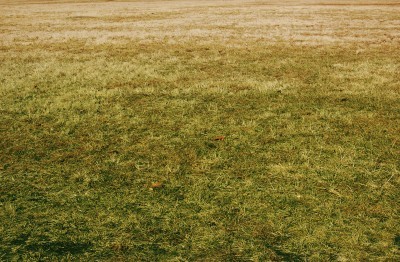






During the summer, many of us have unattractive yellow lawns. This is due to our conservation efforts with regard to water. Water rates go up in summer and much of the country is in drought conditions, so suspending water to the lawn makes sense. There are also other issues that can cause a lawn to discolor. Among these are dog urine, pests, disease, overuse, and fertilizer amounts. But do you know how to turn a yellow lawn green again? Read on for some fixes for yellow lawns.
Yellow lawn problems could stem from a host of conditions. The most common is dryness but excess nitrogen is another. This is most frequently from dog urine but can also come from over fertilizing.
Nitrogen is the first number in a fertilizer ratio. It enhances green, leafy growth and is a necessary nutrient for a healthy lawn. However, too much nitrogen can cause a lawn to yellow. This is because it burns roots and changes the pH of the soil. This creates issues with the roots’ ability to uptake other nutrients and water. Always water in fertilizer deeply.
Similarly, dog urine has high nitrogen content and burns spots in the lawns. These are easily recognized as yellow spots bordered by greener grass. This is because the diluted edges of the urine area are actually feeding the grass, but the concentrated center is burning the roots. Train Fido to go in another area of the garden.
Another potential cause is heat and sunlight. Excessively hot weather and areas that are exposed to full sun all day will dry out quickly, and the heat stresses the lawn. This results in yellow areas. Watering more frequently and deeply will usually correct the issue.
If you don’t have a dog and you water frequently, you may have to get down on your hands and knees to find the culprit. Small larvae or insects could be chomping on grass roots and affecting the color or there may be a disease. Look for patterns when determining if you have any yellow lawn diseases.
Faded, yellow turf grass can also stem from disease or deficiency. Lack of nitrogen or iron will cause the green to fade. A soil test can indicate if there are any deficiency areas and then you can correct them with a plant food.
Diseases are usually fungal with some of the most common diseases being:
Combat with a good fungicide applied in spring and with good cultural yellow lawn care. This includes regular watering, thatching and aerating, mowing properly and giving the lawn food in early spring and again in early summer.
If you still can’t find the issue, get out a magnifying glass and lay down in the grass. Part the blades and look in the thatch for larvae and insects. Any number of insect larvae may be eating the roots of the grass. Adult insects are not usually the problem so you need to get to the larvae when they are young. Once you have identified the culprit, use an insecticide formulated for that pest.
After you have figured out why your lawn is faded, it is time to figure out how to turn a yellow lawn green again. The easiest way is to give the lawn good care and enhance the vigor and health of the turf grass so it has the strength to combat any pest or disease problems.
Copyright © www.100flowers.win Botanic Garden All Rights Reserved